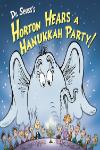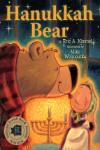Witness to the Dark. A Testimony of Survival by Wolf Holles

Buy this book at Amazon or for Kindle or at Bookshop
The SS overseer glanced stonily about at the stoic faces of the prisoners who surrounded her. She raised the clipboard and began to call the first names, her sharp voice sounding uncannily hollow in the cold, damp air.… I watched a flock of white birds circling overhead. They were flapping their wings, wheeling and swooping, then soared in the air and flew away into freedom… Longingly, I stared after them. Wolf Holles was born in Nürnberg, Germany, in 1931. His parents, understanding that Hitler’s Germany would be no place for Jews, moved the family to safety in Holland. There Wolf enjoyed an idyllic childhood, until Holland was also not safe for Jews, and the nightmare began.
Through the German occupation, deportation to Westerbork and then Bergen-Belsen, and a voyage on the famous Lost Train and ultimate liberation, this haunting memoir traces a life lived in the shadow of the most dramatic events of the twentieth century. As the end of World War II approached, efforts were made at many Nazi concentration camps to destroy records and either to murder the remaining prisoners or to transfer them elsewhere. This was in response to SS instructions that no prisoners should be found when Allied troops arrived. The “death marches” are infamous, but less well known is that there were also many transfers by train. These transports were frequently conducted from within the camps themselves. When the Allied armies smashed beyond the Rhine and began slicing into central Germany, in early April 1945, three trains left Bergen-Belsen. One reached its destination in Theresienstadt.
The second was liberated by the Americans at a village near Farsleben in Germany. The last of the three transports, the one we were on, was the last train to leave Bergen-Belsen. It never reached its destination. Our train contained about twenty-five hundred Jews – men, women, and children – and a group of armed SS guards. We were all loaded into forty-five railway cars. Some were passenger cars and some were typical antiquated freight cars called “forty and eights,” signifying that these cars would accommodate forty men or eight horses. I was thirteen years old when I climbed with my mother and two brothers onto this train. The armed SS guards, striding around the platform, kept motioning for the prisoners to move, yelling over the noise of truck engines, “Vorwärts! Schneller! Move it! Faster! Get it moving! Get it moving!” The question on everyone’s lips was “Where are we going?”
Year first published: 2022

















